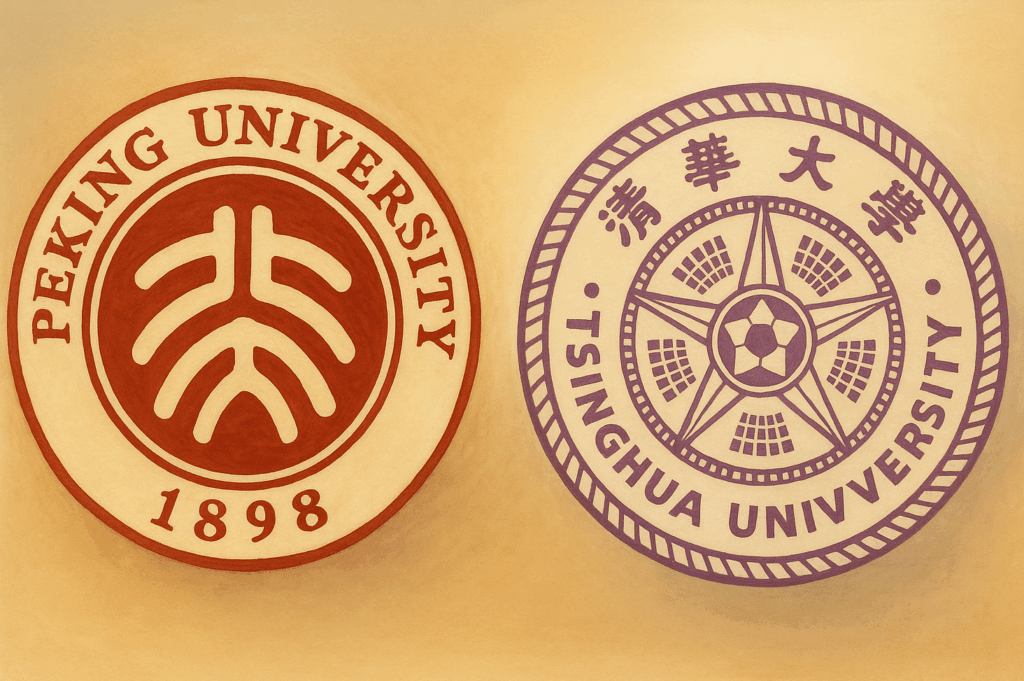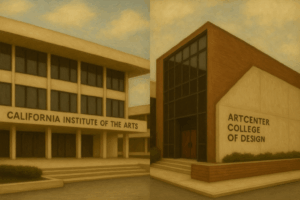
The GOAT of Chinese Universities?
Peking University and Tsinghua University, the two pillars of Chinese higher education, boast world-class reputations for their long histories and outstanding academic achievements. They are not merely China’s top universities; they are two colossal intellectual engines designing the nation’s future. If Peking University acts as the ‘brain of China’ as a center for humanities and free thought, Tsinghua University provides the driving force, like the ‘heart of China,’ through engineering, technology, and political leadership.
This article, based on the latest information from 2025, provides a comparative analysis of key metrics from both universities, highlighting their unique identities and strengths.
1. A Glance at Their Standing: 2025 World University Rankings
Peking and Tsinghua consistently occupy the top ranks in major world university rankings, engaging in fierce competition.
| Ranking Body | Peking University (World Rank) | Tsinghua University (World Rank) | Peking University (Asia Rank) | Tsinghua University (Asia Rank) |
|---|---|---|---|---|
| QS World University Rankings | 14 | 20 | 1 | 7 |
| THE World University Rankings | 13 | 12 | N/A | N/A |
| US News Best Global Universities | 31 | 12 | 2 | 1 |
2. History and Spirit: The Cradle of Humanities vs. The Temple of Engineering
Peking University: The ‘Beida Spirit’ and Free Thought
Established in 1898 as the Imperial University of Peking, it is China’s first national comprehensive university. As the birthplace of the May Fourth Movement and the New Culture Movement, it has left a deep mark on modern Chinese history.
- The core values of Peking University (Beida) are the ‘Beida Spirit’ of ‘patriotism, progress, democracy, and science,’ and an academic tradition of ‘freedom of thought and all-inclusiveness.’ It emphasizes holistic development and helps students apply knowledge to real social issues.
Tsinghua University: ‘Generalist-Specialist Education’ and the Engine of National Development
Since its establishment in 1911, Tsinghua has played a key role in China’s modernization and development. It boasts an unrivaled status, especially in engineering, and has produced numerous political leaders.
- Tsinghua’s educational philosophy is based on a generalist-specialist approach, with ‘general education as the foundation and professional knowledge as a supplement.’ It aims to build expertise upon a broad base of foundational knowledge, nurturing well-rounded individuals with ‘virtue, intelligence, and physical fitness’ who serve society and humanity.
3. Academic Strengths: Basic Sciences & Humanities vs. Applied Sciences & Engineering
Peking University: Depth in Humanities, Social Sciences, and Basic Sciences
Peking University traditionally excels in the humanities and social sciences, while also possessing outstanding research capabilities in science, engineering, and medicine.
- Key Strengths: Economics and Management, Mathematics, Physics, Chemistry, Life Sciences, History, Philosophy, etc.
- Major Research Labs: Key Laboratory for National Land Spatial Planning and Development Protection, centers for severe kidney disease, innovative drugs, hematologic oncology, and lung cancer big data research.
- Recent Achievements: Announced notable achievements in life sciences, including the development of a far-infrared dopamine probe and the identification of multicellular cooperation patterns within tumors.
Tsinghua University: Leader in Engineering and Advanced Technology
Tsinghua boasts an unparalleled reputation in engineering and conducts research that leads the nation’s core technological advancements.
- Key Strengths: Engineering, Computer Science, Materials Science, Physics, Chemistry, Life Sciences, etc.
- Major Research Labs: National Key Laboratory for Intelligent Green Vehicles and Transportation, National Key Laboratory for Operation and Control of New Power Systems, Ministry of Education Key Laboratory for Advanced Reactor Engineering and Safety.
- Research Capabilities: Operates numerous national and ministerial key laboratories in areas such as microwave and digital communications, integrated optoelectronics, and bioinformatics.
4. Student and Financial Environment (2024-2025 Data)
Student Composition Comparison
| Category | Peking University | Tsinghua University |
|---|---|---|
| Total Students | 49,821 | 62,496 |
| Undergraduate Students | 16,746 | 16,272 |
| Graduate Students | 33,075 | 46,224 |
| International Students | 2,459 | 2,681 |
| Full-time Faculty | 3,821 | 3,882 |
Tuition Comparison (Annual, for International Undergraduates)
- Peking University: Science/Engineering: 30,000 RMB; Humanities/Social Sciences: 26,000 RMB; Clinical Medicine: 45,000 RMB.
- Tsinghua University: Science/Engineering: 30,000 RMB; Humanities/Social Sciences: 26,000 RMB; Arts: 40,000 RMB.
- Note: Tuition for graduate and specific programs may vary, and both universities offer various scholarship programs.
5. Post-Graduation Career Paths: Academia vs. Industry/Politics
Peking University
- The overall employment rate for the 2024 undergraduate class was 93.81%, with 84.23% of them choosing to pursue further education.
- The proportion of students studying abroad was 18.38%, indicating a strong tendency to continue academic pursuits.
Tsinghua University
- Over 90% of the 2024 graduating class continued their studies or found employment domestically.
- The proportion of students pursuing further studies abroad was 9.6%, while the employment rate in key domestic sectors and priority units exceeded 85%.
- The most common industries for graduates are IT services, education, and scientific research & technology services.
6. Alumni Who Moved the World
Peking University: Thinkers and Academic Masters
| Field | Figure | Achievement |
|---|---|---|
| Politics/Thought | Li Dazhao | A pioneer of the communist movement in China, a key founder of the CPC. |
| Politics/Thought | Mao Zedong | The principal founder and paramount leader of the People’s Republic of China. |
| Thought/Education | Hu Shih | A key proponent of the New Culture Movement and leader of the vernacular Chinese movement. |
| Science | Qian Sanqiang | A pioneer of nuclear physics in China, a ‘Two Bombs, One Satellite’ merit scientist. |
| Economics | Justin Yifu Lin | The first person from a developing country to serve as Chief Economist of the World Bank. |
Tsinghua University: National Leaders and Pioneers in Science & Technology
| Field | Figure | Achievement |
|---|---|---|
| Politics | Zhu Rongji | Former Premier of China, successfully managed a ‘soft landing’ for the economy with strong reforms. |
| Politics | Hu Jintao | Former General Secretary of the CPC and President of China, promoted the ‘Scientific Outlook on Development.’ |
| Politics | Xi Jinping | Current General Secretary of the CPC, President of China, and paramount leader. |
| Science | Chen-Ning Yang | 1957 Nobel Prize laureate in Physics for innovative contributions to particle physics. |
| Science | Qian Xuesen | The ‘Father of Chinese Aerospace,’ founder of China’s rocket and missile programs. |
7. Conclusion and Implications
As of 2025, Peking University and Tsinghua University have solidified their status as the two pillars of Chinese higher education, maintaining top positions in global university rankings.
- Peking University excels in cultivating well-rounded individuals with comprehensive thinking, based on its depth in the humanities and social sciences and its broad academic freedom.
- Tsinghua University focuses on producing key technical talent and political leaders necessary for national development, driven by its overwhelming strength in engineering and science and its pragmatic educational philosophy.
Although the two universities have different strengths and educational ideals, both have made immense contributions to China’s modernization and its growing global stature. This comparative analysis shows that they play complementary roles, simultaneously ensuring the diversity and excellence of Chinese higher education.


